Why and How to Grow a Garden without Tilling
When you think of planting a new garden, do you envision a yearly tilling? That’s the way gardeners have planted for decades, after all. But what if there is a better way? What if you could grow a garden without tilling?
Personally, I haven’t tilled my garden in years, and I’ve seen the benefits of a no-dig approach to gardening. But don’t just take my word for it.
Recently, I had the privilege of talking with the king of no-dig gardening (he literally wrote the book on it), Charlie Nardozzi. What I loved about my time with Charlie is that he breaks this topic down into such easy-to-understand concepts.
(*links below contain affiliate links, which means if you click through and make a purchase, we will earn a commission at no extra cost to you.)
Feel free to listen to our conversation in its entirety on the podcast episode below, or continue reading.
How does tilling affect the soil?
Many long-time gardeners start their garden season by tilling the garden. The truth is, though, this isn’t something that has to be done and, in fact, can hurt your garden. Every time you turn the soil over, you potentially destroy life in the soil, essential for a healthy garden.
Over 4 billion microbes live in just one teaspoon of soil. Is that as mind-blowing to you as it was to me? Every time we till that soil, we destroy many of these microbes. Fungal networks, important for helping plant roots access nutrients, are pulverized and have to build back up all over again.
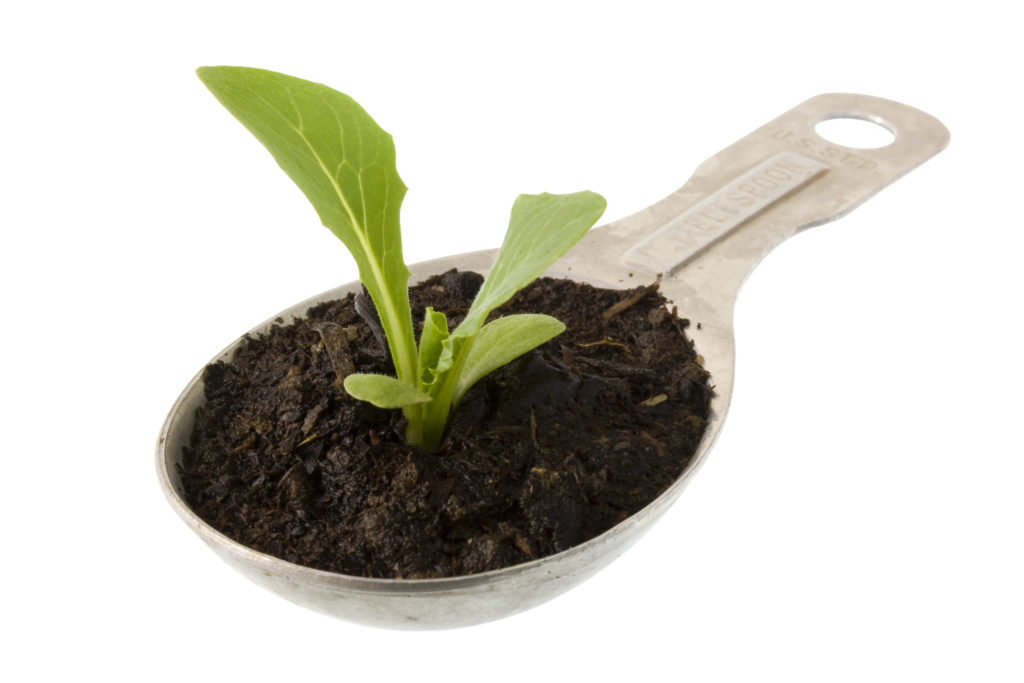
Tilling the soil also introduces oxygen into the soil. This may sound like a good thing because this helps break down organic matter quickly, producing a burst of nutrition. But this rise is temporary, and the act of introducing this oxygen actually burns up the organic matter of the soil faster, leaving your plants without nutrition they need later in the season.
By not tilling, the organic matter breaks down at a slower pace, providing nutrition for the plants for the long-term.
What are the benefits of no-dig gardening?
Besides the aforementioned less labor, because your soil is so rich from constantly layering it with organic matter, you will rarely need to fertilize! You can plant your crops a little bit closer to one another because there are enough nutrients to feed more plants. This means you can get more out of a smaller space.
You’re also sequestering carbon into the earth when your plants feed the soil and this is actually very helpful in reducing global warming. What an easy way to impact the earth in such a simple way!
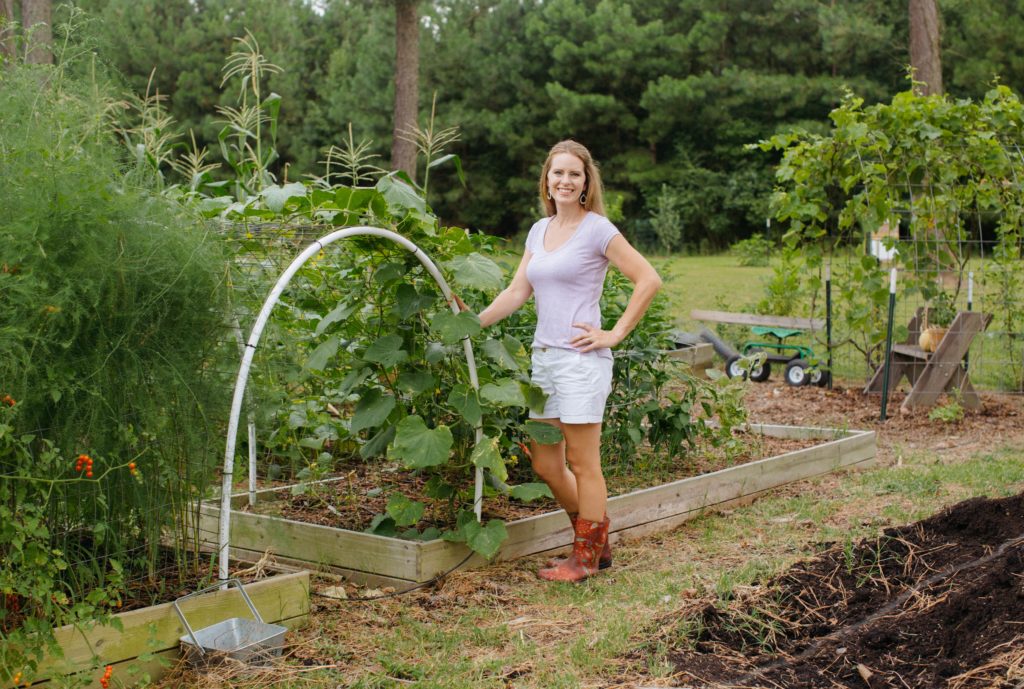
How to convert a garden space to no-till
To start the no-dig method in your existing garden, one of the ways you can go about it is to simply add compost to your garden space in the fall. By spring, most of this will be broken down and accessible by your plants when you do your spring planting.
You will see the initial benefits of this immediately because there is far less work when you don’t have to spend your time tilling. You can also plant earlier because you don’t have to wait for the soil to dry out to till it.
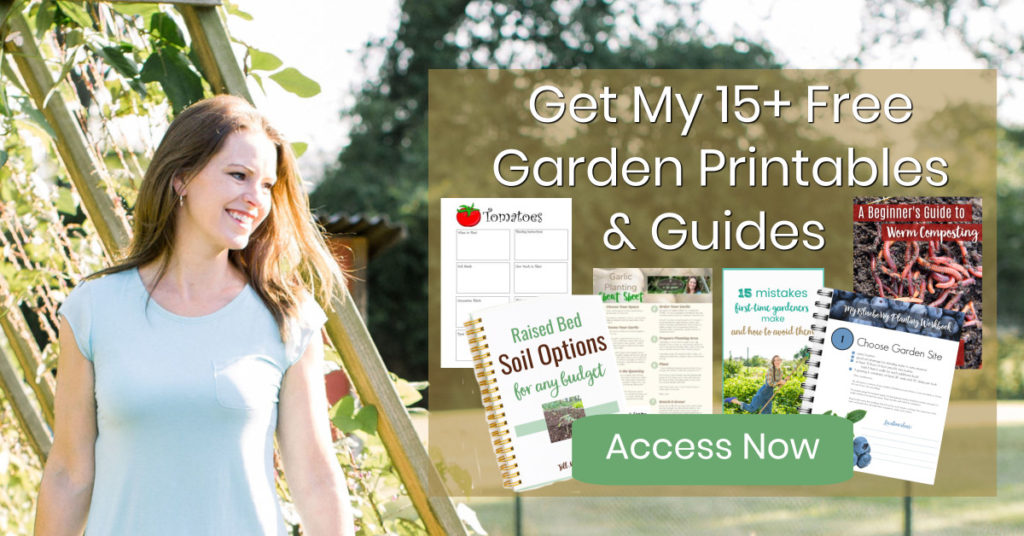
How do I convert a lawn into a garden space without tilling?
Using the no-dig method, you can actually cover your lawn (where you want your new garden space) with newspaper. Be mindful that you don’t use a glossy print. You will put about 4 layers down, watering it down. Then, add 6 to 8 inches of organic material like straw or shredded leaves and then a few of inches of compost on top.
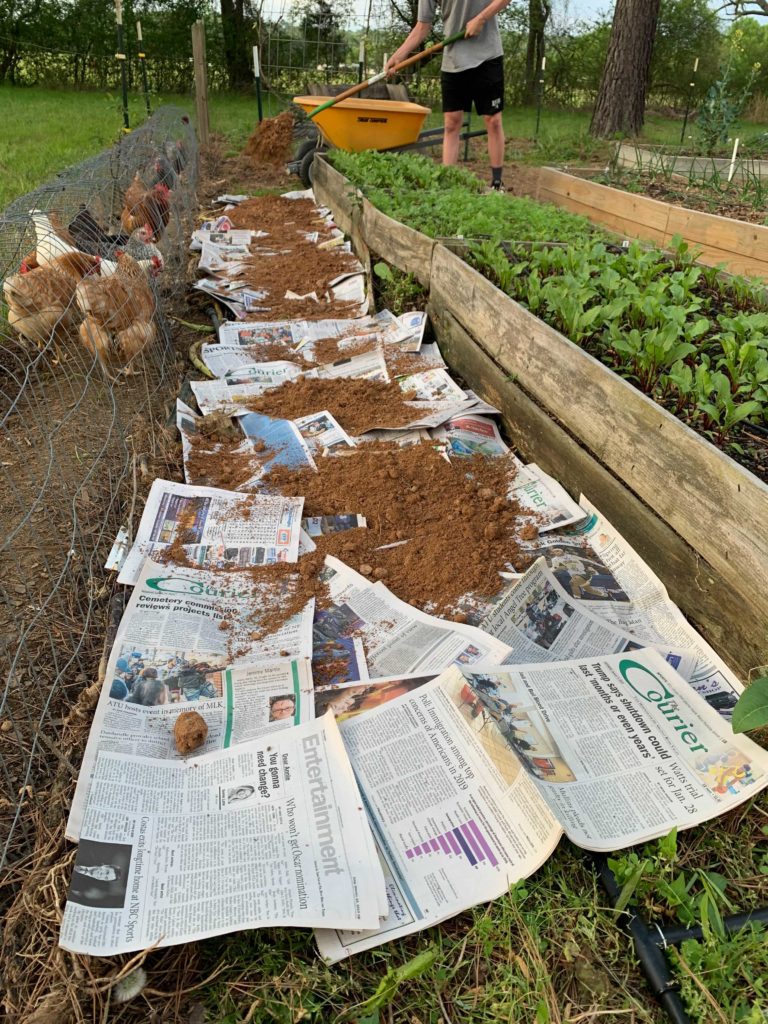
If you do this in the fall, you can plant as normal in the spring.
If you do this in the spring, increase the amount of compost you add (to about 4″) to ensure the plants can access plenty of nutrients right away. You also may want to stick with planting shallow-rooted plants that first spring, like lettuce and brassicas, while you wait for the newspaper to decompose into the soil. Once it does, deeper-rooted plants can be planted since access to the soil beneath isn’t blocked.
If your lawn is made up of bermudagrass, quackgrass, or more aggressive weeds, replace the newspaper step with cardboard. Cardboard will break down and eventually smother the weeds underneath it, but it will take much longer — perhaps over a year — to fully incorporate into the soil beneath. For that reason, ensure you have plenty of organic matter on top for the present year’s crops and plant shallow-rooted crops that first season.
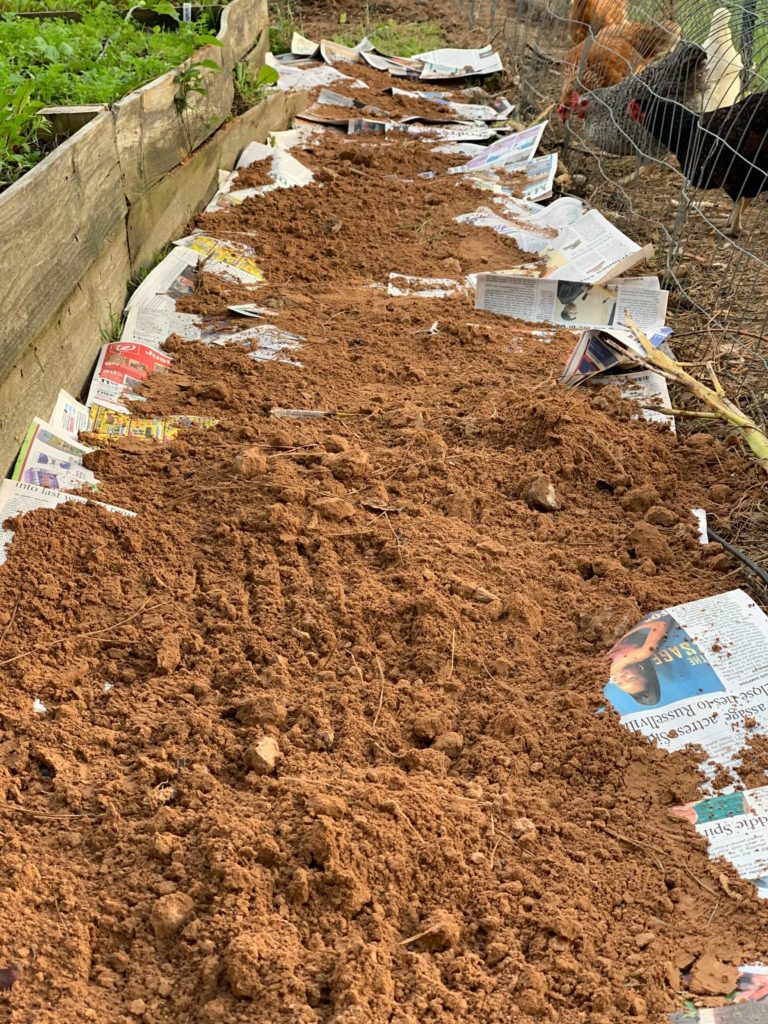
How to maintain a no-dig garden
You may wonder how — after the initial covering of your garden with organic matter — you will continue to add nutrition to the soil. The answer is more organic matter. This can come from many sources. Compost we’ve talked about is the first choice of many gardeners; we can add a layer once or twice per year. But there are other ways to feed the soil.
A great way to feed your soil is the chop and drop method at the end of the season. Cut down harvested crops that didn’t have disease and leave them on top of your soil. These will break down over the fall and winter and feed your soil over the long term.
Think about nature as you do this. No one is there to feed the trees in the forest. Those leaves drop naturally, feeding the soil below season after season. We are mimicking what nature has been doing since the beginning of time.
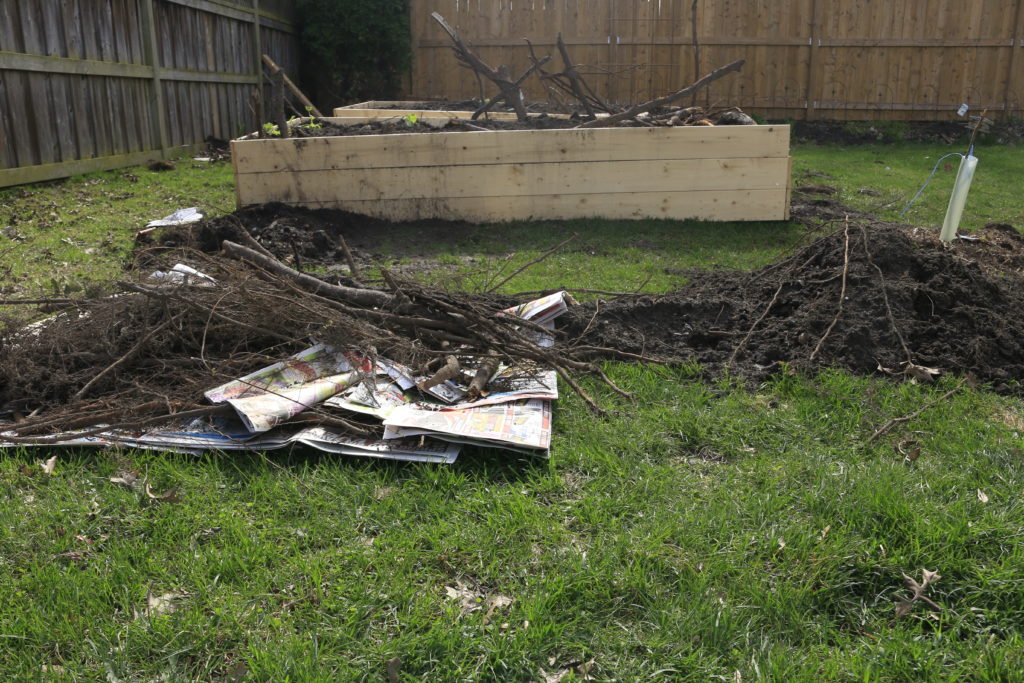
What are other no dig method options?
When you think of no-dig gardening, you may think of covering the ground soil like we discussed mostly here. But there are many other ways to grow a no-dig garden.
Raised beds are the perfect no-dig gardens. To maintain soil fertility each year, just add a few inches of compost on top once or twice per year.
Another option is deep mulching where you add an 8 to 10-inch layer of chemical-free hay or leaves and continue adding more as it breaks down into the soil. Pull apart the mulch to plant, and then pull the mulch back around the plants through the season.
If you have really poor soil, you try your hand at straw bale gardening. Another option is hugelkultur. This technique consists of stacking logs 3 to 4 feet tall, add some organic matter, and then your compost layer on top. You can go 10 to 15 years with these logs feeding your soil.
In Charlie Nardozzi’s book, No Dig Gardening, he goes into these different methods in-depth.
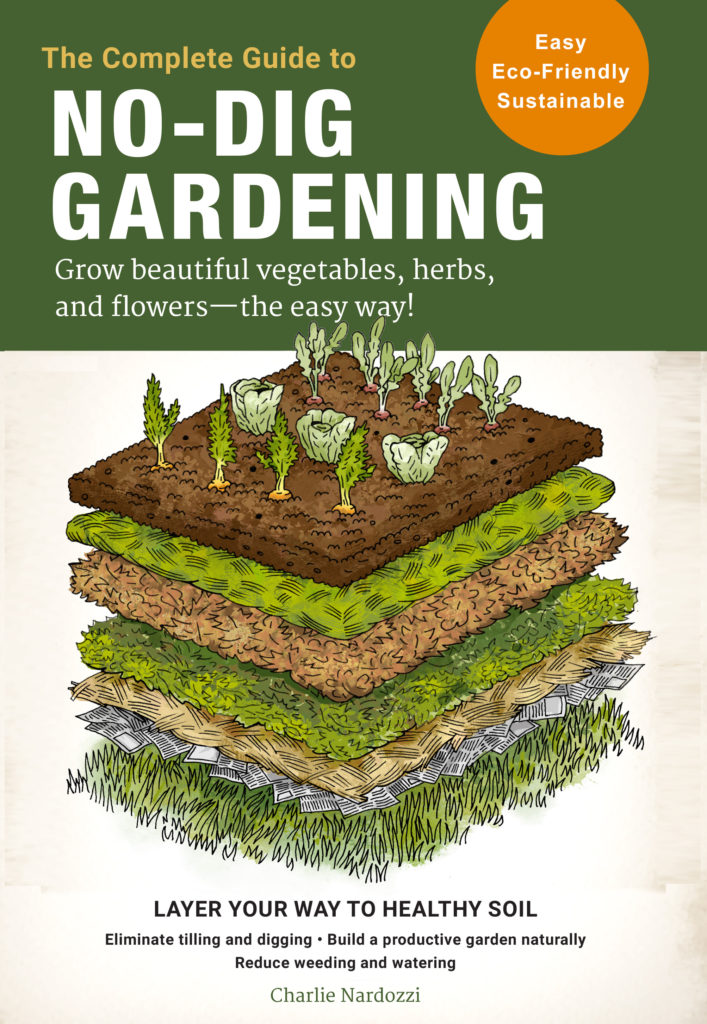
No matter what method you choose (and as you see the options are many) we know that you will see the benefits of no dig gardening from the moment you start!
Do you get overwhelmed with garden planning?

Subscribe here for my best tips to plan your garden in just 7 days -- all for FREE.
Plus, I'll send you my "In the Garden E-mail" on Fridays, periodic updates on garden resources relevant to you, and you'll receive access to my entire bank of free garden downloads!
You are also agreeing to our privacy policy.

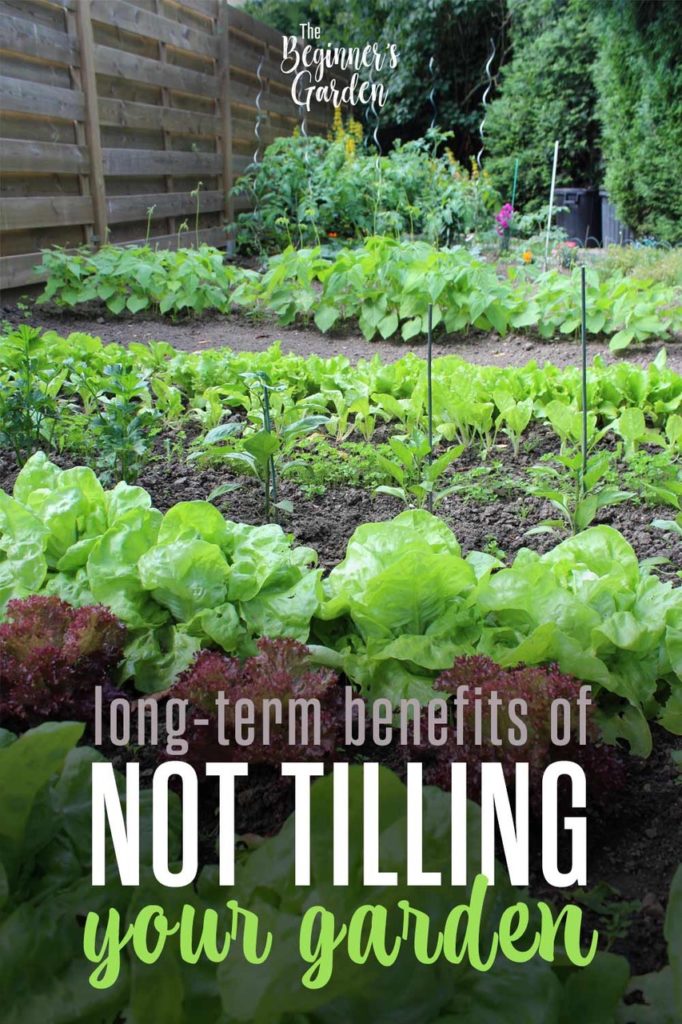
Hi Jill,
Absolutely loved this post. As a beginner, I found this post so helpful.
Thank you Jill. I bought Nardozzi’s book. I’ve tried my luck with raised garden beds and the no till layering method with some success last season. I didn’t get much produce but I’m hopeful this year will better. I used scrap wood, old water troughs, and tires for my raised beds. I spent way to much money on soil and mulch. I did start to compost which I know over time this will benefit my garden. I’ve enjoyed the learning journey. I’ve listened to most of your podcasts and look forward to the new ones coming up. You have been such an encouragement to me. God bless you and thank you!
Sincerly, Marsha from the Midwest (Zone 4a)
Thank you, Martha! Hopefully with a fresh layer of compost you’ll find your beds producing even better this year!